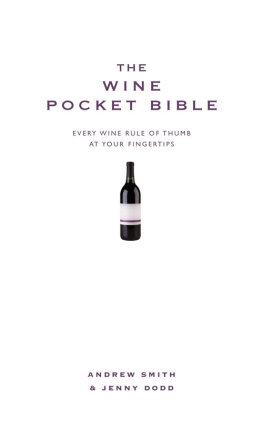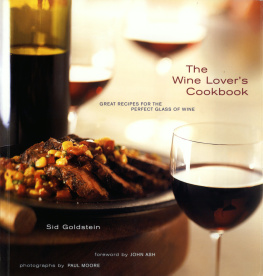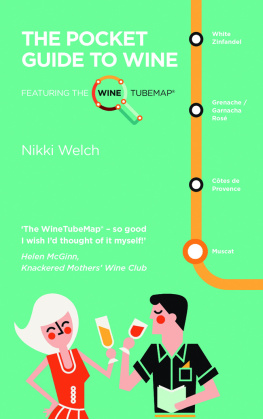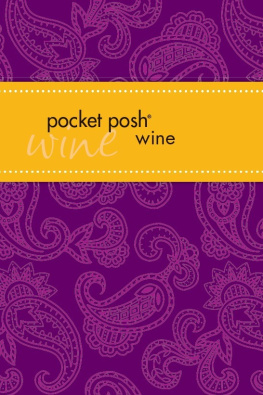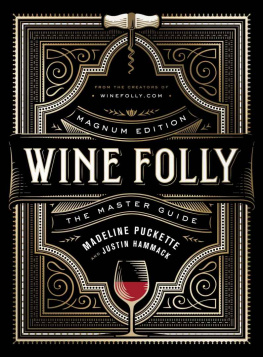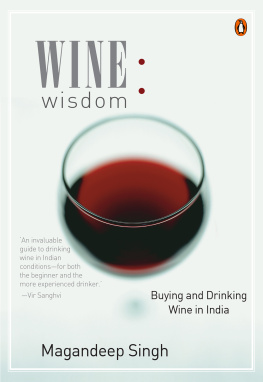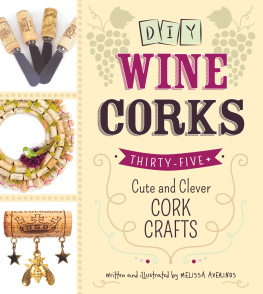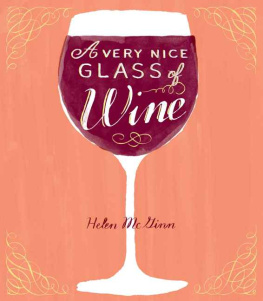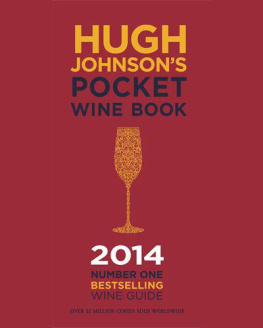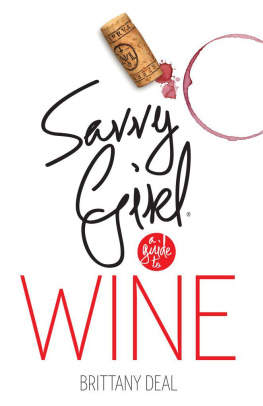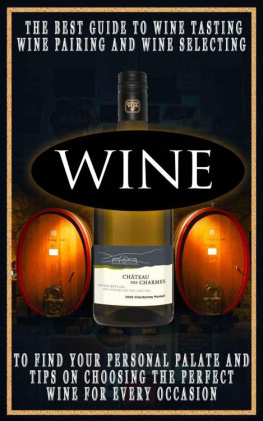THE
WINE POCKET BIBLE
ANDREW SMITH & JENNY DODD

The Wine Pocket Bible
Andrew Smith & Jenny Dodd
This first edition is published in 2009 by Crimson Publishing Crimson Publishing, Westminster House, Kew Road, Richmond, Surrey TW9 2ND
Crimson Publishing, 2009
Epub edition 2012 ISBN 978-1-907087-45-5
British Library cataloguing in Publication data
A catalogue record for this book is available from the British Library.
All rights reserved under International and Pan-American Copyright Conventions. By payment of the required fees, you have been granted the non-exclusive, non-transferable right to access and read the text of this ebook on-screen. No part of this text may be reproduced, transmitted, downloaded, decompiled, reverse engineered, or stored in or introduced into any information storage and retrieval system, in any form or by any means whether electronic or mechanical, now known or hereinafter invented, without the express written permission of Crimson Publishing ebooks.
Epub file created by RefineCatch Ltd, Bungay
CONTENTS
The astounding variety of wines available can seem a little overwhelming at times. Yet, to enjoy a wine you dont necessarily need to know its life story. This book introduces you to some of the nuances of the wine world, so that you can make your own exploration of the tantalising opportunities available. With a little more wine knowledge you may surprise yourself safe old favourites are soon replaced with exciting new gastronomic discoveries. From wine and food pairing to correct tasting procedure, we will help you get the best out of the galaxy of stunning wines available from across the world. Including tips on buying, cellaring and the health benefits of the noble beverage, The Wine Pocket Bible is your trusty companion on a truly enjoyable tour of the world of wine.
A SHORT HISTORY OF WINE
By way of introduction, this whirlwind history of wine may serve as a brief indication of how changes have shaped the character of the modern wine industry.
The Egyptians planted grapes along the fertile banks of the Nile in 2500BC and were the first to embark on a process which would transcend the legacy of even their own culture. They designed an early wine-press that consisted of a platform upon which the grapes were placed for treading through a mesh, with a vat set underneath to collect the resulting juice and pulped skins. This mixture of grape flesh, juice, skin and seeds was then put in earthenware pots to ferment, before being siphoned off and filtered ready for drinking. The process is remarkably similar to today.
From humble beginnings as a rustic brew in the land of the Pharaohs, winemaking travelled to its natural home on the Mediterranean and further to the Aegean. In the hands of the Greeks, the process of winemaking changed dramatically. They trained grape vines to grow up trellises and planted them in orderly rows, giving birth to the concept of the vineyard. Amazingly, traditional Greek winemaking practices still influence local production of rustic wines with some international appeal. Thucydides remarked that The peoples of the Mediterranean began to emerge from barbarism when they learned to cultivate the olive and the vine. The spread of both the vine and cultivation to Rome was to herald a turn in the fortunes of the Greeks and a shift in historical dialectic.
As power balances readjusted, Rome became the worlds dominant force and their cultural hegemony stamped itself across early Europe. So too did their winemaking, and the land of cultivated vines, termed Oenotria by the Greeks, exhibited the greatest innovations in winemaking since its conception. As the imperial eagle of Rome spread across Europe, so too did the vine. Roman settlers cultivated vines in Britain, France, Germany and beyond, impressing their methods on local populations who would come to make their own wines.
The eventual decline of Romes influence did not herald the death of winemaking, and locals took over control of production. Wine production flourished for a time in the Middle East and North Africa, before it was checked by the spread of Islam which forbade intoxication. In France and Germany, however, monks and religious orders became some of the most prodigious wine producers as Christian sacraments virtually demanded libations. They produced rustic wines for use in church and distributed wine to help fund the abbeys. Throughout the Middle Ages wine was a popular and widely available drink, varying widely in quality and price as it does today. From the courts of kings to London ale-houses, wine enchanted and intoxicated myriad drinkers, thinkers and thieves.
The social advances witnessed in the Early Modern period revolutionised lives across Europe. The rise of artisanal bourgeois classes turned winemaking into a skilled pursuit practised by enterprising businessmen in the Renaissance states of Italy. Likewise, an appreciation of fine wine developed.
Under Elizabeth I, the expansion of Britains merchant navy saw widespread trade links with Portugal and Spain established and wine freely traded with them for the first time. The use of glass to bottle wine began in the 17th century, and this improved both the quality and ability to transport and store individual bottles, as opposed to the casks previously used. Perhaps the greatest change to this was that some Europeans now conducted their business and pleasure outwith Europe itself in a so-called New World. Fearful that lush new worlds and cities of gold would lose their lustre without recourse to familiar wine, conquistadors brought with them samples of their native vines and attempted to grow them in a hostile climate. Most did poorly and the New World would remain obscure in the wine world until much later. Nevertheless, the seed had been planted.
The 18th century saw the development of distinguishable grape varieties, as French and German wine-growers established the tenets of the modern classification systems by developing distinct regional wines. This distinction heralded the birth of a wine industry worth speaking of as private individuals began increasingly to import and export wines of some recognised quality. The rise of the industry was fed by something of a golden age in European wine, as the beginning of the 1800s failed to halt the popularity and availability of fine wine at all the best dinner tables in Europe.
The 19th century, however, held a massive shock in store for the European wine industry. Travel to and from the Americas brought a pestilential louse back to France. Phylloxera vastatrix (a kind of root louse) claimed the vines and livelihood of most of Europes wine regions during a period beginning in the 1860s as it spread like wildfire. Solutions were difficult to come by, yet were eventually found: cuttings of the European vine were grafted onto the rootstock of the American vines, which were not affected by the louse, allowing for the winemaking potential of the European grape to be augmented by a resistance to this new outbreak. Replanting was swift and large scale, with very few places in Europe unaffected. This solution also resulted in the successful cultivation of European vines in North America, resulting in a boom in New World production.
The wars of the 20th century blighted many vineyards, whilst devastating the production of traditional growers in France, Germany, Italy and elsewhere. Much wine was, however, produced for soldiers, ensuring the survival of a diminished wine economy. The spread of unionisation as a concept also led to the increasing appearance of

